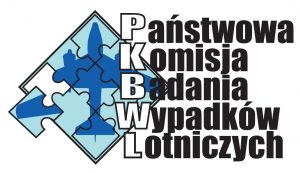WYPADEK (ACCIDENT) - 2021/1048
wiatrakowiec (gyroplane)
TERCEL
Toruń
2021-05-09
- Kategoria Statku Powietrznego
- Aircraft Category
- wiatrakowiec (gyroplane)
- Typ Statku Powietrznego
- Aircraft Type
- TERCEL
- Znaki Rozpoznawcze
- Aircraft Registration Marks
- SP-XERO
- Miejsce Zdarzenia
- Occurrence Place
- Toruń
- Data Zdarzenia
- Occurrence Date
- 2021-05-09
- Czas zdarzenia (LMT)
- Occurrence Time (LMT)
- -
- Klasyfikacja Zdarzenia
- Occurrence Class
- WYPADEK (ACCIDENT)
- Operator/Użytkownik Statku Powietrznego
- Aircraft Operator/User
- -
- Masa Statku Powietrznego
- MTOW
- <2250
- Poziom Obrażeń
- Injury Level
- brak (none)
- Podmiot Badający
- Investigation Authority
- PKBWL
- Status Badania
- Investigation Status
- zakończone (closed)
2021-1048-1 Badanie zaistniałego zdarzenia wykazało, że materiał i rozwiązania konstrukcyjne zastosowane w śmigle Kašpar Ka-2/3-LT nie zapewniły jego odpowiedniej wytrzymałości i były przyczyną wypadku. W związku z powyższym PKBWL zaleca aby: Producent śmigła Kašpar Ka-2/3-LT rozważył zasadność wprowadzenia zmiany materiału i rozwiązań konstrukcyjnych prowadzących do zwiększenia do niezbędnego poziomu wytrzymałości łopat śmigła Kašpar Ka-2/3-LT.
2021-1048-1 The Investigation of the accident showed that the material and design solutions applied in the Kašpar Ka-2/3-LT propeller did not ensure its adequate strength and were the cause of the occurrence. Therefore, PKBWL has proposed the following safety recommendation: It is recommended that the manufacturer of the Kašpar Ka-2/3-LT propeller considers the necessity of introducing changes in the material and design solutions leading to an increase in the durability of the Kašpar Ka-2/3-LT propeller blades to the necessary level.
Dnia 9 maja 2021 r. pilot i zarazem właściciel wiatrakowca TERCEL przybył na lotnisko Aeroklubu Pomorskiego w Toruniu (EPTO) celem wykonania lotu rekreacyjnego. Pilot wyhangarował wiatrakowiec, a następnie wykonał przegląd przedlotowy zgodnie z Instrukcją Użytkowania w Locie Wiatrakowca TERCEL. W trakcie wykonywanego przeglądu pilot nie zauważył żadnych nieprawidłowości dotyczących stanu technicznego wiatrakowca. Około godziny 11:53 pilot wystartował, a następnie wykonał lot w strefie ATZ EPTO na wysokości około 2400 ft. W trakcie powrotu na lotnisko startu, kiedy wiatrakowiec znajdował się nad gęstym, wysokim lasem, pojawiły się niepokojące drgania konstrukcji. Ponieważ w ocenie pilota drgania stopniowo narastały, zmniejszył on obroty silnika do minimalnej wartości aby odciążyć konstrukcję wiatrakowca. Jednocześnie rozpoczął zniżanie do wysokości 1400 ft, oraz obrał kurs lotu gwarantujący dolot do lotniska najkrótszą drogą. Pilot poinformował lotnisko drogą radiową o sytuacji niebezpiecznej oraz poprosił o pierwszeństwo lądowania z dowolnym kursem, po czym natychmiast otrzymał zgodę na lądowanie oraz informację o aktualnym kierunku wiatru. Po osiągnięciu wysokości1400 ft pilot zwiększył obroty silnika do wartości gwarantującej lot poziomy. Po kolejnych około 30 sekundach lotu nastąpił gwałtowny wstrząs oraz bardzo silny wzrost wibracji całego wiatrakowca. Pilot natychmiastowo wyłączył silnik, na skutek czego wibracje ustały. Następnie pilot wyłączył główny wyłącznik zasilania instalacji elektrycznej, zamknął główny zawór paliwa oraz poinformował lotnisko o lądowaniu awaryjnym w lesie. Wiatrakowiec z wyłączonym silnikiem gwałtownie wytracił prędkość, więc pilot wprowadził maszynę w nurkowanie celem zabezpieczenia prędkości i wybrał na miejsce lądowania awaryjnego pobocze linii kolejowej przecinającej las. W ocenie pilota było to jedyne w tej okolicy miejsce umożliwiające wykonanie lądowania awaryjnego. Pomimo ograniczonej manewrowości nurkującego wiatrakowca, pilotowi udało się przelecieć ponad czubkami drzew. Przed przyziemieniem końcówki łopat wirnika nośnego weszły w kolizję z pniami drzew oraz linią energetyczną średniego napięcia, która znajdowała się w obrębie miejsca lądowania. Po kontakcie z przeszkodami wiatrakowiec przyziemił na koła podwozia głównego po północno-zachodniej stronie torowiska. Podczas przyziemienia lewe koło podwozia głównego trafiło w granitowy słupek geodezyjny, co spowodowało wyrwanie podwozia oraz obrót kadłuba w lewo, a następnie przewrócenie wiatrakowca na lewą burtę. Obracający się wciąż wirnik, po przewróceniu wiatrakowca uderzył w ziemię, na skutek czego destrukcji uległy jego łopaty, maszt, a także usterzenie tylne. Po zdarzeniu pilot samodzielnie opuścił wrak wiatrakowca przez prawe drzwi, bez obrażeń, a następnie poinformował przez telefon o zdarzeniu Aeroklub Pomorski, służby ratunkowe, oraz Państwową Komisję Badania Wypadków Lotniczych. Przybyłe na miejsce Pogotowie Ratunkowe zbadało pilota, a Straż Pożarna ugasiła pożar ściółki leśnej, zainicjowany zerwaną linią energetyczną.
On May 9, 2021, the pilot (and owner) of the TERCEL gyrocopter arrived at EPTO – Pomeranian Aeroclub’s aerodrome to perform a recreational flight. The pilot performed a preflight check in accordance to the Flight Manual. No technical irregularities were found at that time. At about 9:53 hrs UTC the pilot took off and then made a flight in the EPTO zone at an altitude of about 2400 ft. During the return flight to EPTO, when the gyrocopter was above a dense, high forest, the pilot noticed vibrations of the fuselage. According to the pilot's assessment, the vibrations gradually increased, therefore, he reduced the engine speed to the minimum in order to relieve the gyrocopter structure. At the same time, he began descending to 1400 ft , and chose the shortest way to the aerodrome. The pilot informed the Aerodrome service by radio about the emergency and asked for priority to land with any course, and immediately received clearance to land and was informed about the current wind direction. After reaching the altitude of 1400 ft , the pilot increased the engine speed to a value that guaranteed a level flight. After another 30 seconds, there was a sudden shock and a very strong increase in vibration of the entire gyrocopter. The pilot immediately shut down the engine and the vibrations stopped. Then the pilot turned off the main electric power switch, closed the main fuel valve and informed the aerodrome about the emergency landing in the forest. The gyrocopter with the engine turned off abruptly lost speed, so the pilot performed a dive to gain speed and chose to land near the railway line crossing the forest. According to the pilot, it was the only place in this area that allowed for an emergency landing. Despite the limited manoeuvrability of the diving gyrocopter, the pilot managed to fly over the treetops. Before the touchdown, the tips of the main rotor blades collided with tree trunks and the power line located in the area of the landing site. Then, the gyrocopter touched down on the main landing gear on the north-west side of the railway track. During the touchdown, the left wheel of the main landing gear hit the granite post. As a result the landing gear was torn out and the fuselage turned to the left and the gyrocopter overturned to the right side. The rotating rotor hit the ground, causing blades, mast and rear tail destruction. After the occurrence, the pilot left the wreckage unaided through the right door, without injuries, and then informed (via phone) the Pomeranian Aero Club, emergency services and PKBWL about the accident. The ambulance service arrived at the site and examined the pilot, and the fire brigade extinguished a forest litter fire, initiated by the broken power line.
- Raport Wstępny
- Preliminary Report
- -
- Oświadczenie Tymczasowe
- Interim Statement
- -
- Raport Końcowy
- Final Report
- Uchwała
- Resolution

